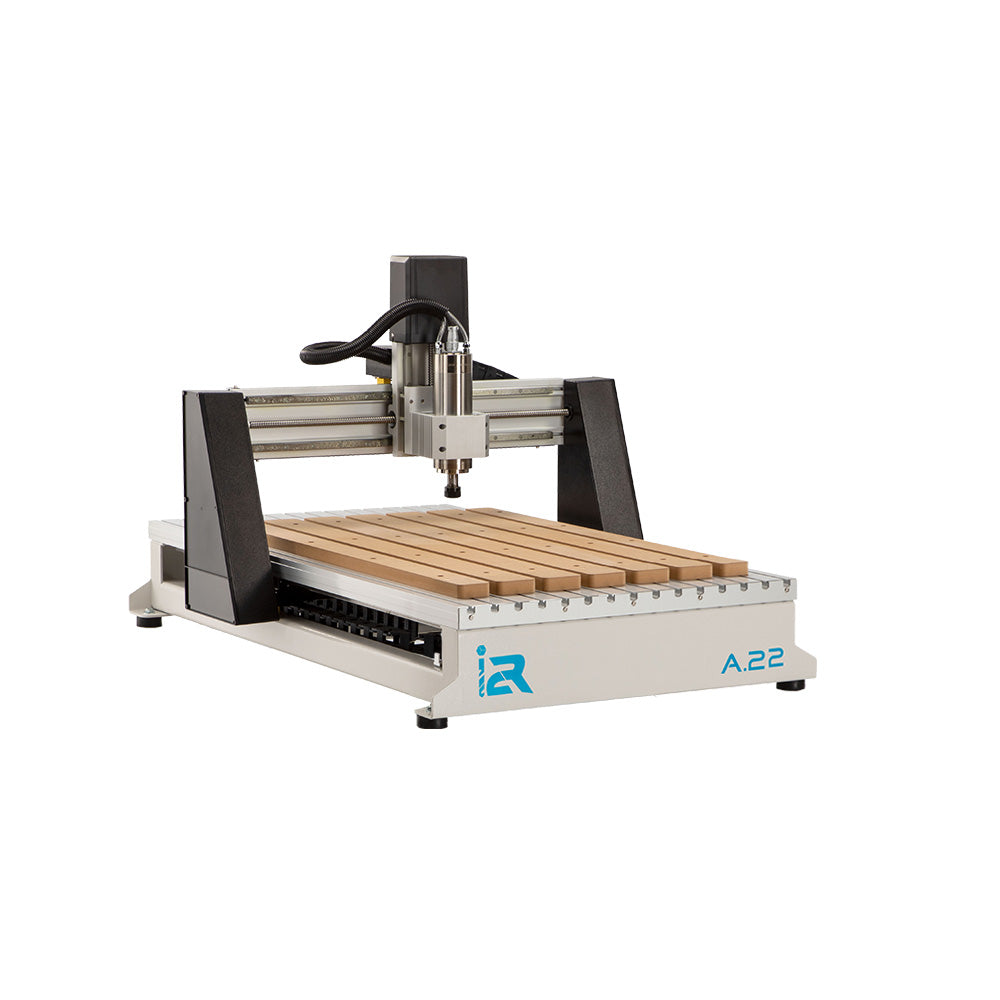Material Surface vs. Machine Bed Touch Off
When I first started using a CNC, I saw no useful distinction between choosing material or machine bed touch off. It wasn't until I started making multi-piece cuts that I realized that setting is the difference between perfectly precise and unusable.
Lets say you want to make a .25" pocket cut into a .5" piece of plywood. You also plan on shaving down a different piece of .5" plywood to a height of .25" so that it lays flush in the initial pocket. This is the exact kind of instance where you need to know the difference between material and machine bed touch off. It should be noted that all of this is based on the calculations you input in your toolpath software between the "material thickness" and the "cut depth" settings. Along with that, these scenarios assume and require you have a flat surfaced machine bed and material.

Machine Bed Touch Off
The most important thing to keep in mind is that the touch off acts as your machines reference point. As for the plywood that's being shaved to a specific height (inlay piece), you would assume that touching off on material surface and cutting down .25" would leave you with .25" of material. However, that assumes that your plywood is perfectly .5" (not .475" like most "half inch" ply tends to be). Even if it was incredibly close to .5", without it being exactly that thickness, you have no way of guaranteeing the height of your inlay piece and the depth of your pocket will match.
When you use machine bed touch off, think of it as the machine knowing what it isn't cutting - what's being left behind on the machine. The machine knows exactly where the bottom of the material is, so using that as a reference point, it will know the distance from the machine bed to the spindle. So long as the remainder of your material thickness setting (.5") minus your cut depth (.25") is the desired thickness of your inlay piece (.25"), that is what will remain on the machine. Even if your actual material is completely inaccurate from what you inputed for the material thickness, your machine will leave behind the amount you calculated with machine bed touch off. So remember, if you want to have a specific amount of material remain, use machine bed touch off.

Material Surface Touch Off
Contrary to machine bed touch off, material surface touch off allows the machine to know what it is cutting. Material surface touch off is used when you need to remove a specific amount of material. In the pocket and inlay scenario, you need the pocket to have a negative depth of exactly .25", but if you were to use machine bed touch off, you'd run into the same inaccuracy issue due to the imperfect material thickness. For instance, if your material was actually .51" thick and you did machine bed touch off, the pocket depth would turn out to be .26" deep because the cut is based off the machine not cutting away a remaining .25", and .51"-.25"=.26" for the pocket depth.
However, if you were to use material surface touch off, the inverse occurs. The machine's reference point gets flipped to where the 0 point is the top of the material. Now, the machine knows what it is cutting. With that reference, the machine knows that it has to travel downward .25", therefor resulting in a .25" pocket depth.

As you can see, a lot more goes into setting your Z-zero than just an arbitrary preference. This information can extend far beyond pocket inlays. No matter what kind of cut, you will get a better result with either a material touch off or a machine bed touch off. We hope these outlined principals will help you decide which of those is best suited for your projects.


